Reducing the environmental load of our logistics and real estate facilities
Tobishima Distribution Center in Nagoya
Tobishima Distribution Center in Nagoya, which was completed in October 2008, is a building that considers environmental quality, performance and the reduction of environmental impact through the reduced power consumption achieved through the installation of an ice thermal storage air-conditioning system, an intensity/human movement sensitive lighting system, and other features, as well as an earthquake-proof structure and a dust-proof clean environment on all floors. It is ranked highly (Class A) by the IBEC (Institute for Built Environment and Carbon Neutral for SDGs), a representative CASBEE assessment and certification organization.
- *CASBEE(Comprehensive Assessment System for Building Environmental Efficency)


Yokohama Dia Building
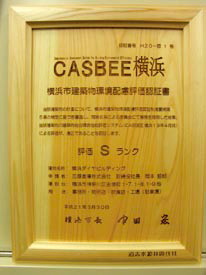
The Yokohama Dia Building was completed in the Yokohama Port-Side District in December 2009, and in March 2009, while it was still under construction, it was certified as Class S, the highest rank in the system evaluating the environmental performance of buildings (CASBEE Yokohama certification system). It was the first Class S certification for Mitsubishi Logistics Corporation.
Through this system, Yokohama City focuses on measures to address global warming, heat islands, and building longevity, and considers the landscape of the city. Their environmental efforts, which have been particularly praised, are outlined below.
Global warming mitigation
The largest bank of architecture-integrated solar panels in japan are installed on the outer wall facing Yokohama Station for the use of green energy. In addition, automatically controlled blinds using an automatic solar light tracking sensor and light control using a daylight sensor are employed to control the thermal load of the building.
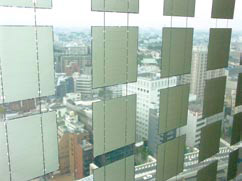
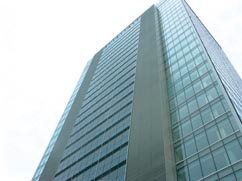
Global warming mitigation
The largest bank of architecture-integrated solar panels in japan are installed on the outer wall facing Yokohama Station for the use of green energy. In addition, automatically controlled blinds using an automatic solar light tracking sensor and light control using a daylight sensor are employed to control the thermal load of the building.
Longevity measures
The building employs a hybrid damping structure that combines a damper (AMD), which moves a weight using a computer-controlled device to cancel out building vibrations and reduce vibrations caused by wind, etc. using vibration controllers (vibration control braces and walls), aiming to improve the durability of the building.
Consideration of the city's landscape
A public promenade leading from Yokohama Station to the Port-Side District was constructed which contributes to the pedestrian network. Also, a pocket park has been constructed to provide an open and relaxing space.
The greening of buildings
Mitsubishi Logistics strives to green the roofs and walls of its buildings to enable co-existence with nature and help conserve the environment. Yokohama Bay Quarter's wall garden won the Green Wall Contest's Design Award given to high-quality finished greening projects. The contest is organized by Yokohama City as part of their heat island measures.
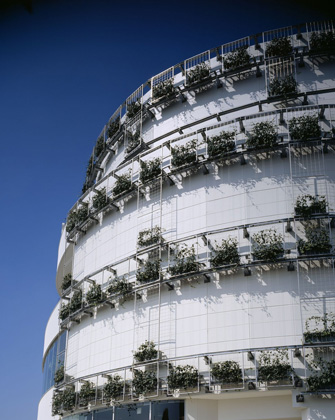
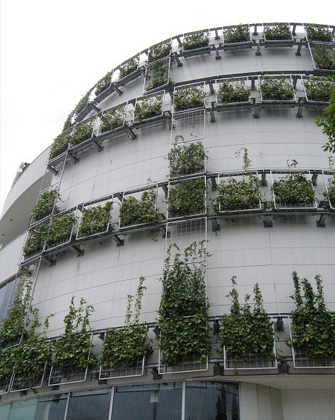
Photovoltaic generation systems
Tosu Distribution Center in Saga prefecture has introduced a solar system and reduced its annual CO2 emissions by approximately 5 t.